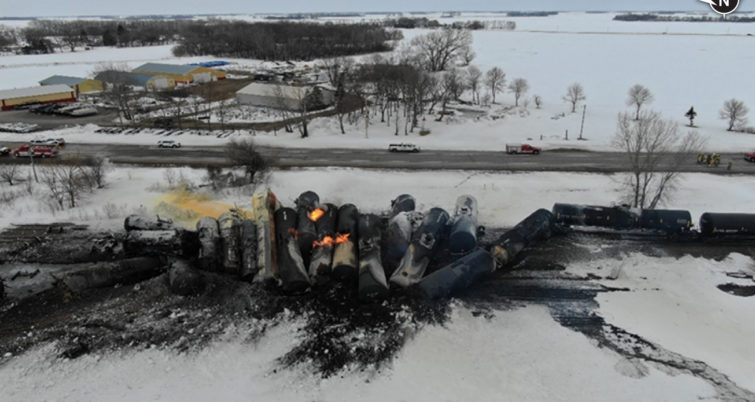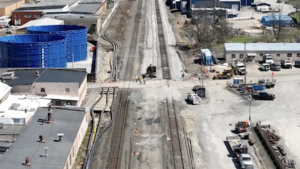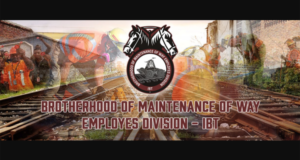NTSB: Fractured Rail Identified in Fiery BNSF Minnesota Derailment
Written by Kyra Senese, Managing Editor
BNSF railroad is analyzing a section of fractured rail following last month's fiery derailment that forced evacuations in southwest Minnesota, federal investigators said; however they have not officially concluded that the broken rail caused the crash.
On April 18, the National Transportation Safety Board issued its preliminary report on the March 30, 2023, derailment in Raymond, Minnesota.
On March 30, Northbound BNSF Railway freight train L-TWI8801-29I derailed 23 mixed freight railcars on the Marshall District at milepost 11.871 in Raymond around 12:58 a.m. local time.
The train was carrying 14 hazardous materials tank cars, 10 of which derailed. According to the National Transportation Safety Board, the derailed tank cars contained denatured ethanol, some of which was released and contributed to a fire.
The incident commander imposed a precautionary 1/2-mile evacuation radius, affecting approximately 800 residents. The fire was extinguished during the morning of March 31, 2023, BNSF officials said. No fatalities or injuries were reported.
BNSF estimated that the damage to equipment and track infrastructure would cost around $1.9 million. At the time of the derailment, visibility conditions at the time of the derailment were dark and clear. The temperature was 3°F with no precipitation.
Train L-TWI8801-29I had one engineer, one conductor, one brakeman, and one conductor trainee on board. The train consisted of two head-end locomotives and 40 loaded railcars, NTSB said.
The train measured 2,264 feet long and weighed approximately 5,423 tons. In the derailment area, the maximum authorized track speed is 49 mph. According to preliminary data from the lead locomotive event recorder, the train was traveling at about 43 mph at the time of the derailment.
The derailed tank cars were built to DOT-117J100W specifications and each carried approximately 28,900 gallons of ethanol, according to the NTSB.
While on the scene, NTSB investigators examined railroad equipment and track conditions, reviewed the event recorder and forward-facing image recorders on the lead locomotive, and conducted interviews.
BNSF shipped a section of fractured rail to the BNSF rail lab in Topeka, Kansas, on April 1, 2023, for further analysis. Also on April 1, the NTSB completed its on-site tank car inspections.
Based on these investigations, officials said hazardous material was released from five derailed tank cars. Two tank cars sustained punctured shells, NTSB said. The ethanol released through these punctures ignited and caused thermal damage to the manway gaskets of three previously unbreached tank cars, releasing more ethanol and spreading the fire.
The thermally damaged manways had been sealed with elastomeric butadiene acrylonitrile gaskets with a 225°F upper-temperature performance, according to manufacturer data.
The Federal Railroad Administration; the Pipeline and Hazardous Materials Safety Administration; BNSF; ADM; the Greenbrier Companies; the International Association of Sheet Metal, Air, Rail and Transportation Workers; the Brotherhood of Locomotive Engineers and Trainmen; and the Brotherhood of Maintenance of Way Employes Division were all involved in the investigation.





